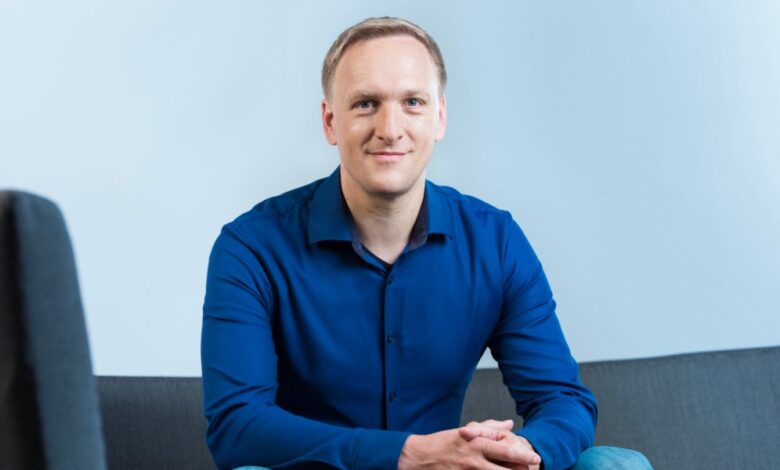Why SAP’s CTO made scale a strategy for generative AI

There’s an unavoidable question facing every tech leader as they embark on an AI adventure: take a limited approach or go big?
For Juergen Mueller, the chief technology officer at SAP, the answer lies in the power of scale and in the areas where generative AI technology can drive the largest value for the most users possible.
“There’s an almost unlimited amount of generic use cases that we can and will bring to our customers,” says Mueller. But with more than 300 million enterprise users leaning on SAP’s cloud solutions, the German business software firm looks for ways to expand AI horizontally to all types of customers.
One big area of focus has been SAP’s generative AI copilot, Joule, which launched in September and by the end of this year, will be fully integrated with all major SAP cloud applications ranging from HR, finance, supply chain, and procurement. Joule is already integrated with SAP’s HR tool SuccessFactors, helping clients that craft 2 million job postings each year create stronger first drafts that can be utilized by hiring managers and recruiters.
SAP is investing more than $1 billion in AI over the next two years, focusing on the products it develops for customers—including automating workplace tasks, data and analytics, and code development tools—while also embedding AI internally at SAP. In the first half of this year, SAP introduced more than 25 new AI capabilities to boost productivity and HR-related tasks.
The company also invested in three generative AI companies last year: Aleph Alpha, Anthropic, and Cohere. And SAP has reorganized itself as the focus on AI intensifies, with a restructuring affecting around 8,000 jobs that will either see voluntary exists or re-skill internally.
SAP has taken an agnostic approach to partnerships, working with vendors ranging from OpenAI to Anthropic and allowing developers using SAP products like SuccessFactors to submit a prompt to those large language models and compare the generated outcomes. By experimenting with a few models, typically at least two to three at a time, Mueller says developers can find the best-suited model for each task.
Mueller expects to see more specialized large language models be developed for more targeted business use cases. “I don’t think there will be hundreds of large language models that we will use in a business context,” says Mueller.
SAP is developing its own models, when it doesn’t get what it needs from what’s available on the market. Mueller says the firm is particularly focused on tabular data, like predictive analysis for financial data that’s organized in rows and columns.
In April, SAP extended its contract with Mueller for another three years through the end of 2027, a common arrangement for a German-based company where a supervisory board is given authority to advise executives like Mueller.
After the first two years of the contract, Mueller and the supervisory board meet to discuss what the future path for his work at SAP would look like if he were to stay on. “There’s sufficient planning,” says Mueller. “I like it because it starts some good thinking and reflection.”
Mueller, who was included on the Fortune 40 Under 40 list in 2020, joined SAP in 2013 and held various leadership roles including chief innovation officer before ascending to the CTO job in 2019. He oversees the SAP Business Technology Platform, which combines application development and automation, data management, analytics, and generative AI capabilities into one unified environment for SAP’s applications.
Mueller believes workplaces need to enable their workforces to share ideas of how generative AI can automate tasks, rather than management forcing the technology onto an organization. To encourage greater experimentation of generative AI, SAP created an AI playground that allowed more than 60,000 employees to try out more than 2 million AI prompts last year.
“The best ideas, oftentimes, come from the people who are doing the work,” says Mueller.
John Kell
Send thoughts or suggestions to CIO Intelligence here.
NEWS PACKETS
EU task force says ChatGPT is not meeting data accuracy standards. The European Union’s privacy watchdog says OpenAI’s efforts to produce less factually false output from the company’s ChatGPT chatbot are not enough to ensure full compliance with EU data rules. But even with those preliminary conclusions, the task force remains undecided on legal issues, such as the lawfulness and fairness of OpenAI’s processing, TechCrunch reports. Ultimately, the issue is important as penalties can be levied for confirmed violations of the EU’s privacy regime.
Google’s AI search feature is already making big, early mistakes. After Google last week debuted the tech giant’s biggest change to search in many years, the new AI capabilities have since generated errors and untruths and caused a kerfuffle online. The launch extends a pattern of Google debuting new AI features that immediately have issues after their rollout—the Bard chatbot and its successor, Gemini, similarly ran into accuracy problems. But the New York Times reports that Google remains under pressure to move quickly to keep up with rivals, like Microsoft, and that means growing pains will occur along the way.
IBM’s cybersecurity software sale shakes up vendor relationships for CISOs. IBM’s decision earlier this month to sell the company’s QRadar cybersecurity cloud software to Palo Alto Networks is considered a “stunning about-face” and puts customers in a position to either follow the migration of the QRadar legacy and SaaS suites to Palo Alto’s Cortex XSIAM, or mull other options, according to a DarkReading report. Chief information security officers, even as they push to consolidate some cyber tools, aren’t always keen to do so for threat detection and response, Wall Street Journal reports, and by using at least a couple of vendors, there is less risk that threats will slip through the cracks.
ADOPTION CURVE
While generative AI is the top type of AI solution deployed by companies, a survey by research firm Gartner shows that the primary obstacle to adoption is the difficulty in estimating and demonstrating the value of AI projects (49% of survey participants). Other top barriers include lack of talent/skills (42%), lack of confidence in the technical aspect of AI (40%), and lack of data (39%).
Gartner’s survey of 644 respondents from companies in the U.S., Germany, and the U.K. also found that the top way firms were using generative AI was when the tech was embedded in existing applications, like Microsoft’s Copilot for 365 or Adobe Firefly (34% of respondents were using generative AI in this manner). This was followed by customizing generative AI models with prompt engineering (25%), training or fine-tuning bespoke generative AI models (21%), or using standalone tools like ChatGPT or Gemini (19%).
JOBS RADAR
Hiring:
– Paula’s Choice Skincare, a skincare and beauty products maker, is seeking a VP of IT based in Seattle. Posted salary range: $250K to $280K/year.
– Intel is seeking a director of IT infrastructure based in San Jose, Calif., for the company’s programmable chips business that will spin off and become a standalone firm by early 2025. Posted salary range: $186.8K to $299.2K/year.
– CareScout, a subsidiary of insurance provider Genworth Financial, is seeking a chief product and technology officer based in New York City. Posted salary range: $275K to $325K/year.
Hired:
– RedTeam has appointed Patrick Smith as CTO, where he will steer technology product development for the provider of construction management software. Prior to joining RedTeam, Smith worked at consultancy PwC, where he led the development of software solutions for internal teams and clients.
– NCAA announced the appointment of John Macrina as VP and CTO. With more than 25 years of experience, Macrina most recently served as SVP and global head of enterprise technology at TelevisaUnivision.
– EXIT Realty Corp. announced Susan Harrison has been appointed to the position of chief information officer. Harrison, who has worked in real estate for 36 years, initially joined EXIT Realty in 2000.
– Nuvei named Gang Wang as CTO, reporting to the Canadian fintech company’s chair and CEO Philip Fayer. Wang will lead the technology team alongside former CTO Max Attias, who has been appointed to the new role of CIO.
– Lincoln Property appointed Keats Ali as CTO to oversee all aspects of IT, including enterprise applications, data architecture, and infrastructure. Ali has previously held senior roles at Chevron and Hines.
– OutSystems named Luis Blando as chief product and technology officer to further strengthen the company’s convergence of low-code application development and generative AI capabilities. Prior to joining OutSystems, Blando held leadership positions at Proofpoint, Intel, and Verizon.



